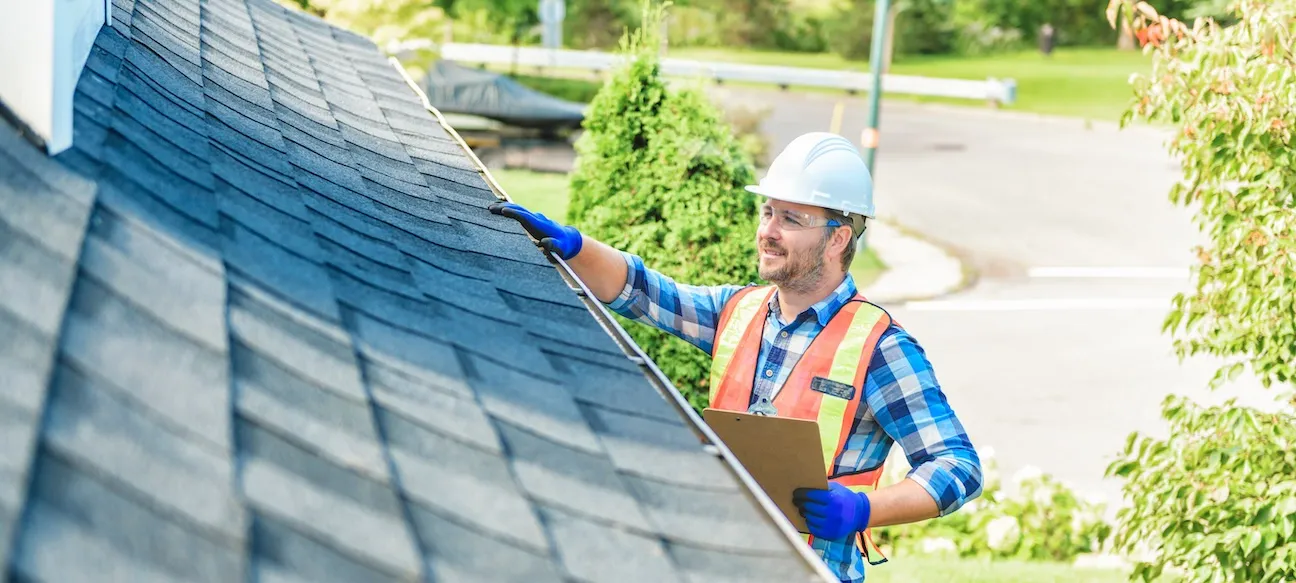In Chantilly, VA, maintaining the exterior of your home isn’t just a “nice-to-have” for curb appeal; it’s a must-have for protecting the most significant purchase most of us ever make. Our roofs guard through late-spring downpours, July’s sticky heat, and those surprise ice storms that blow in before the holidays. If you catch problems early, a minor repair stays small. Ignore them, and suddenly you’re talking soaked drywall, warped flooring, and jaw-dropping repair bills. A roof tuned up regularly keeps energy costs steady, looks sharp from the street, and helps you breathe easier when the forecast turns ugly.
A roof inspection is the home-maintenance version of an annual check-up with your doctor: ninety-nine percent of the time, you walk away with good news, but you’ll be glad you caught the bad stuff before it snowballed. Loose shingles, hairline cracks in flashing, or a drip so small it only shows on the attic side of the plywood, find them now, and the fix is fast, cheap, and non-disruptive. Let them slide, and you invite drenched insulation, sneaky mold, and framing that can sag under its weight. Regular inspections stretch the life of your existing shelter, squeezing every penny from that original investment.
When neighbors swap contractor stories, Elite Roofing & Restoration is the name that comes up repeatedly. We’re local, which means we know how a humid July afternoon can turn into a thunderstorm in ten minutes, and what that does to flashing, ridge vents, and gutter seams. When you call for a complimentary inspection, our crew listens first, talks second. We’ll spell out what’s urgent, what can wait, and what a realistic budget looks like, without scare tactics or upsells. That’s why so many Chantilly families hand us the keys with confidence.
Think of spring and fall as your roof’s pit stops. A spring check catches freeze-thaw damage that winter left behind, while a fall visit reinforces shingles and seals before blustery weather sets in. Schedule another look after any significant storm, hail, high winds, or one of those “once-in-a-decade” downpours. And if you’re buying or selling a house, a documented shelter report is worth its weight in negotiation power.

The visit starts outside. One technician walks the entire surface, eyes trained for popped nails, lifted shingles, rusty vent stacks, and clogged valleys. We photograph every trouble spot so you can see what we see. Then we head inside, flashlight in hand, checking attic sheathing for dark stains, testing insulation depth, and feeling for musty air that hints at trapped moisture. We use drone shots for hard-to-reach ridges, thermal cameras to reveal hidden dampness, and moisture meters that catch leaks before they stain a ceiling. By the end, you’ll know precisely where your shelter stands.
Leaks and water stains usually trace back to cracked flashing around chimneys or skylights. Blistered or missing shingles leave plywood exposed to summer sun and winter sleet. Ventilation issues trap steam from daily showers and cooking, turning attics into greenhouses where mold loves to spread. And now and then, we spot sagging ridgelines or soft decking, signs the structure underneath is crying for help. Catching these red flags early can mean a quick patch and a complete tear-off.
Sure, you can grab binoculars and scan from the driveway, but trained eyes see the stuff homeowners miss: a faint ripple where shingles used to lie flat, a shiny nail head that should be covered, or the first dusting of granules at the bottom of a downspout. Afterward, you get a written report complete with photos, a prioritized to-do list, urgent fixes first, “keep an eye on this” items second. That paperwork becomes your roadmap, making future maintenance painless and predictable.

Surface Condition – Are shingles lying flat, free of cracks, and adequately nailed?
Water-Shed Points – We zero in on flashing, skylights, valleys, and pipe boots where leaks love to start.
Gutters & Downspouts – Clear channels mean water lands in the yard, not your basement.
Attic Ventilation & Insulation – Adequate airflow keeps the shelter deck dry and your power bill sane.
Every item relates to one goal: a tight, healthy shelter that outlasts the next big storm.
We grew up in this zip code, and that hometown loyalty shows in our work. Every technician has manufacturer certifications and full insurance, so your warranty and household stay protected. We specify shingles and underlayment rated for Mid-Atlantic swings in temperature and humidity. Communication stays clear: no fine-print fees, no radio silence once the contract is signed. If we say we’ll be on-site at eight, we’re on-site at eight.
Roofs never fail on a sunny Saturday when you’re flush with free time. They give out at 2 a.m. during a thunderstorm. Book your complimentary inspection with Elite Roofing & Restoration now, and you’ll head into the next season knowing your home can handle whatever the sky dishes out.
How often should I schedule an inspection?
Twice a year, in spring and fall, plus a quick check after severe weather..
Can I inspect my home myself?
You can spot apparent issues from the ground, but a professional has the tools and safety gear to catch the sneaky stuff.
What if damage is found?
We provide a photo-rich report, straightforward solutions, and a firm, competitive quote. No pressure, just facts.
How long does the inspection take?
Most homes take two to four hours, depending on roof size and pitch, with zero disruption to your day.